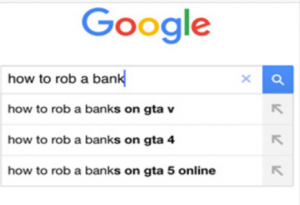Digital technology easily remediates the narrative arts of all other media (radio, movies, tv, fiction), but it also introduces new possibilities that may challenge our very notions of narrative – that a story needs a beginning, middle and end, for example. Which of the above digital texts engage you most and why? Discuss how we can approach new digital works that present stories in unfamiliar and challenging ways. What are your thoughts/experiences of how the digital, hyperlinks and the web are changing the art of storytelling.
The first story that I read was “how to rob a bank”. I liked how Alan Bigelow had took the time to take multiple screen shots and make it feel that you were the one in control, like when you use your phone. I thought the story was easy to understand. A family struggling and had to do something desperate to help themselves survive and make sure that their daughter is taken care of. It was a well put together way of telling the story. Something that I have never seen before. The way the hyperlinks were connected through out the story were nice and smooth. There was no confusion on how the story flowed, even though you couldn’t see some of the slides the way the journal was written to the daughter was detailed. They painted a picture in your head, giving the reader
I also read “With those we love alive” by Porpentine and I loved the Twine! While starting to read it reminded me of a book when I was growing up that gave you options to pick different paths to take in the book. And depending on the path, you could either finish it correctly or hit road blocks on the way. I do believe though that Twine could be a challenge for some people. Some people just want to read a book from start to finish and other’s would, mostly book worms I’m assuming, would enjoy the different roads they can take in stories.

